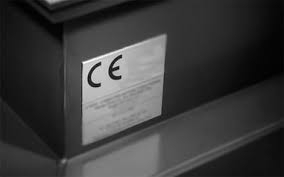CE Certification for Medical Devices: A Comprehensive Guide

CE certification is a mandatory conformity mark for medical devices sold in the European Economic Area (EEA). It indicates that the device meets the necessary safety, health, and environmental protection requirements as per European regulations. This certification is essential for manufacturers seeking to market their medical devices in the EU.
What is CE Certification?
CE marking stands for "Conformité Européenne," meaning European Conformity. It signifies that a product complies with applicable EU directives and regulations. For medical devices, CE certification ensures compliance with the Medical Device Regulation (MDR) 2017/745 or the In Vitro Diagnostic Medical Device Regulation (IVDR) 2017/746.
Importance of CE Certification
-
Legal Market Entry: Required for selling medical devices in the EEA.
-
Product Safety Assurance: Confirms the device is safe and effective for its intended use.
-
Global Recognition: Recognized outside the EU, facilitating market expansion.
-
Consumer Trust: Increases confidence among healthcare professionals and patients.
Steps to Obtain CE Certification
1. Determine the Classification
Medical devices are classified into four categories based on risk:
-
Class I (low risk)
-
Class IIa (medium risk)
-
Class IIb (higher risk)
-
Class III (highest risk)
Classification affects the approval process and documentation requirements.
2. Identify Applicable Regulations
Manufacturers must comply with the MDR (2017/745) or IVDR (2017/746). These regulations define conformity assessment procedures, post-market surveillance, and risk management processes.
3. Conduct a Conformity Assessment
Depending on the device classification, manufacturers may need to engage a Notified Body (NB) for assessment. The process involves:
-
Risk analysis and management
-
Clinical evaluation and trials
-
Compliance with ISO 13485 (quality management system)
-
Preparation of a Technical File and Declaration of Conformity
4. Obtain Notified Body Approval (if applicable)
Class I devices (non-sterile, non-measuring) can be self-certified, while higher-class devices require evaluation by a Notified Body.
5. Affix the CE Marking
Once compliance is verified, manufacturers can place the CE mark on their device and accompanying documentation.
6. Maintain Compliance
Manufacturers must conduct post-market surveillance, report adverse events, and ensure continuous compliance with EU regulations.
Challenges in CE Certification
-
Regulatory Complexity: The MDR and IVDR have stringent requirements, making compliance challenging.
-
Clinical Data Requirements: Higher-risk devices need extensive clinical evidence.
-
Long Approval Timelines: Involvement of a Notified Body can extend certification time.
Conclusion
CE Certification for Medical Devices manufacturers targeting the EU market. Understanding the classification, compliance steps, and regulatory requirements ensures a smooth certification process. By obtaining CE marking, manufacturers demonstrate their commitment to product safety and regulatory adherence, opening doors to a broader market.
- Questions and Answers
- Opinion
- Motivational and Inspiring Story
- Technology
- Live and Let live
- Focus
- Geopolitics
- Military-Arms/Equipment
- Seguridad
- Economy
- Beasts of Nations
- Machine Tools-The “Mother Industry”
- Art
- Causes
- Crafts
- Dance
- Drinks
- Film/Movie
- Fitness
- Food
- Juegos
- Gardening
- Health
- Home
- Literature
- Music
- Networking
- Other
- Party
- Religion
- Shopping
- Sports
- Theater
- Health and Wellness
- News
- Culture

